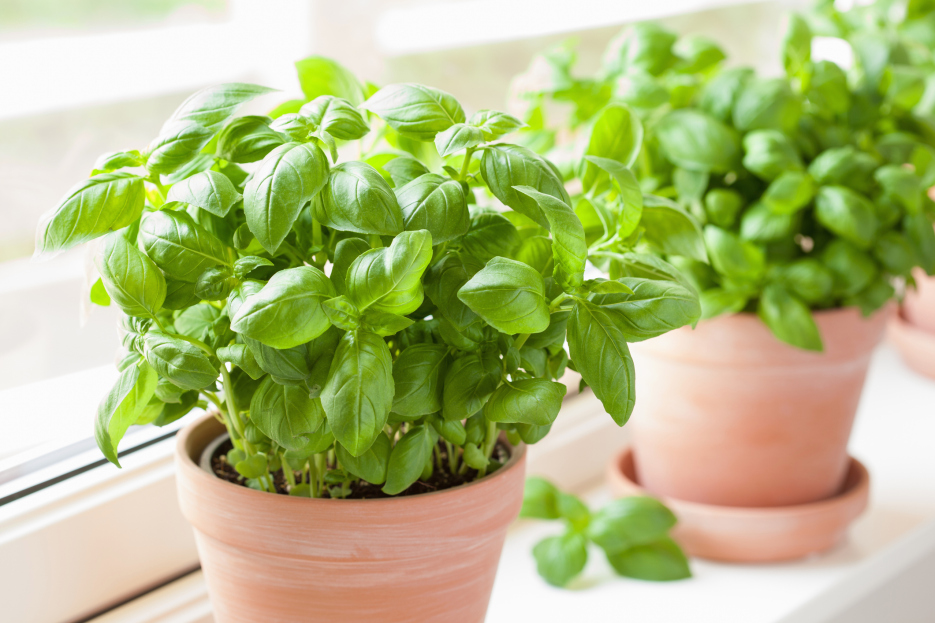
Basil is a beloved herb known for its fragrant leaves and versatility in the kitchen. Whether you're growing it in your garden or in a pot indoors, It is relatively easy to care for if given the right conditions.
Basil thrives in full sunlight, needing at least 6-8 hours of direct light daily to grow its best. If you're growing them indoors, place it on a bright windowsill or under a grow light to ensure it gets enough light. Outdoors, make sure it's positioned in a spot that gets plenty of sun, but shield it from intense afternoon sunlight if you notice any scorching to its leaves.
Basil doesn’t require heavy feeding but benefits from a light, balanced fertilizer. Use an organic liquid fertilizer every 4-6 weeks during the growing season to encourage lush growth. Be cautious with over-fertilizing, as this can reduce the plant’s essential oil production, which gives it its flavor.
Basil likes consistently moist soil but not waterlogged roots. Water the plant when the top inch of soil feels dry. In warmer weather, they may need watering every 2-3 days, while in cooler seasons, you can reduce the frequency.
Always ensure proper drainage to prevent root rot. When watering into a pot without drainage holes, be sure to discard any excess water after watering to prevent root rot or pests.
Basil grows best in well-draining, rich soil. A mix of regular potting soil with some compost works well. If you're growing it in containers, ensure they have drainage holes. Re-pot your plant when it becomes root-bound, usually once per growing season. Spring is the best time for repotting, especially if you're transferring seedlings to a larger pot.
Basil is sensitive to cold and prefers warm temperatures between 70°F to 85°F (21°C to 29°C). It doesn’t tolerate frost, so if you're growing it outdoors in cooler climates, plant it after all danger of frost has passed. Indoor plants will appreciate being kept away from cold drafts and air conditioning.
Basil prefers a moderate humidity level. While it doesn’t require extra humidity, indoor plants can benefit from regular misting, especially during winter months when the air tends to be drier. You can also add a humidifier into the room your plants are in to help boost humidity. If growing outdoors, natural humidity levels during summer are usually sufficient.
You can easily propagate basil through stem cuttings. Take a cutting about 4 inches long from a healthy plant, remove the lower leaves, and place the cutting in water. Once roots develop (in about 1-2 weeks), transfer the cutting to soil. This is a great way to multiply your plants throughout the growing season.
Regular pruning and trimming encourages basil to grow bushier and produces more leaves. Pinch off the top leaves as the plant grows to promote lateral growth. Also, remove any flower buds as soon as they appear to maintain the plant’s flavor, as flowering causes the leaves to become bitter.
Basil can attract common garden pests like aphids, spider mites, and whiteflies. Regularly inspect the leaves and stems for signs of infestation. If pests appear, try spraying the plant with a diluted neem oil solution or an insecticidal soap. Fungal infections like downy mildew can also occur if the plant is in overly wet or humid conditions. Ensure good airflow around the plant and avoid overwatering.
Yes! Basil is non-toxic to pets. If your cat or dog nibbles on a few leaves, it won’t harm them. However, as with any plant, consuming large amounts might cause mild digestive upset.
Basil requires 6-8 hours of direct sunlight each day.
Water when the top inch of soil is dry. Typically, this is every 2-3 days, depending on the climate.
Basil thrives in well-draining, rich soil, like a mix of potting soil and compost.
Yes, basil can be grown indoors as long as it gets enough sunlight or artificial light.
You can propagate basil from stem cuttings placed in water until roots form.
Basil grows best in temperatures between 70°F to 85°F (21°C to 29°C).
Pinch off flower buds as soon as they appear to keep the plant focused on growing leaves.
Watch out for aphids, spider mites, and whiteflies. Regular inspections and natural remedies can help keep pests at bay.
Basil benefits from light feeding every 4-6 weeks during the growing season